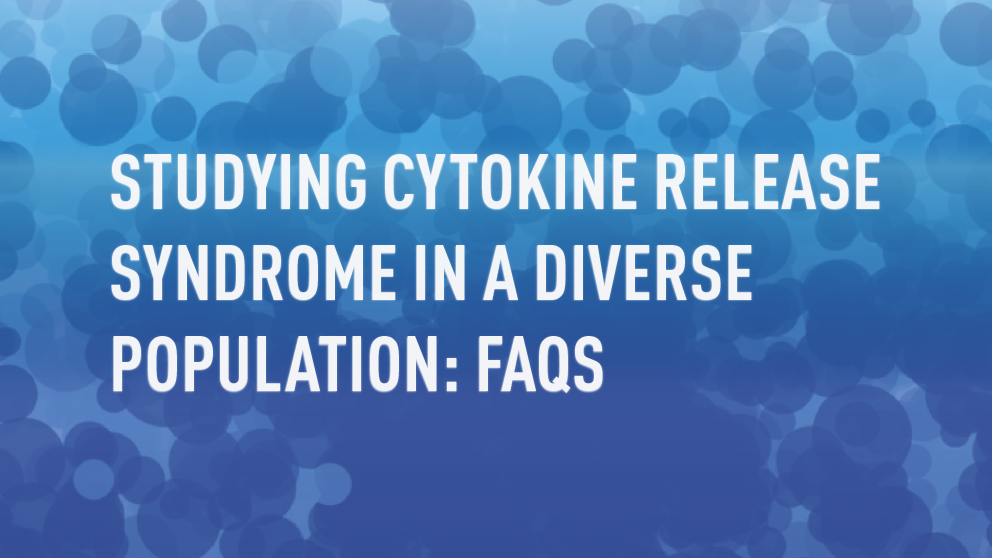
Our immune system is incredibly complex and powerful—sometimes almost too powerful. Occasionally, it responds to a disease or drug with an inflammatory overreaction known as cytokine release syndrome (CRS), a toxicity that can cause severe organ damage and lead to death in the worst cases. Historically, it has been difficult to predict whether a new therapeutic will cause CRS before testing it in humans. To keep patients and clinical trial participants safe, drug developers need preclinical assays that give an accurate picture of how a drug candidate will affect the full range of patients who might receive that treatment.
To understand the future of these preclinical studies, we sat down with James Keck, Ph.D., who was recently recognized as a JAX President’s Innovation Fellow for his work creating mouse-based platforms to study the immune system, and evaluate new therapeutics for both safety and efficacy.
Q: How can we study CRS preclinically in a diverse population, and why is it important?
A: Very few therapeutics that are considered “successful” actually work for everyone. For any given therapy, there are large swathes of the patient population that won’t respond. But too often, drug discovery doesn’t include looking at patient populations preclinically. Researchers will look for efficacy in a dish of human cells or a single mouse strain and imagine that it represents what we’ll see in all people—but it just doesn’t work that way.
We’ve developed a platform that allows us to introduce human peripheral blood mononuclear cells (PBMCs) into mice to give them a humanized immune system. When we introduce a disease or therapeutic drug into the mice, we can see how the humanized immune system responds and observe downstream effects. We’ve proven that humanized mice with different PBMC donors exhibit different immune responses, so we have the ability to perform CRS Evaluation Studies in a group of mice that reflects the diversity in patient populations. That way, we can diminish dangerous surprises.
Q: Do immune responses really vary dramatically from person to person?
A: Absolutely. Just look at any CAR-T cell therapy clinical trial as an example. Reported results include breakdowns of how many patients experienced CRS and how severe the response was—grade 3, grade 4, and so on. Within the same trial, one patient might experience severe organ toxicity after receiving the same dose of the same drug that barely caused a mild fever in another patient.
Q: How can improving our preclinical understanding of CRS benefit drug developers and patients alike?
A: I worked in the biopharmaceutical industry for over 20 years. It’s amazing how many times I’ve seen drug candidates fail in phase 3 clinical trials due to issues with safety and efficacy that we can possibly predict much earlier, which would save a lot of cost and heartache.
There will usually be at least a few individuals who are highly sensitive to a given therapeutic; if those people experience toxic CRS at a lower drug dose than everyone else, that will cap the trial’s maximum tolerated dose at a level that might be lower than the dose required to see efficacy in a larger population. With a representative in vivo study, pharmaceutical developers could identify factors that correlate with higher sensitivity and danger of toxicity. Armed with that information, they could pre-screen individuals with those factors out of the clinical trial, since those patients will not benefit anyway. Without those patients, the trial could yield a higher maximum tolerated dose and potentially yield higher efficacy for the patients who do stand to benefit. Overall, it keeps everyone safer and boosts the chances of success for new therapies.
Q: Why perform in vivo studies when you could use cells from multiple PBMC donors for in vitro assays?
A: In vitro assays are helpful for target identification and candidate selection at early drug development stages, but they aren’t accurate enough when it comes to investigating complex phenomena like CRS. Results from our in vivo assays are highly reproducible and allow us to observe cascading systemic effects that in vitro assays can’t model sufficiently. The circulatory system isn’t a closed vessel; there are so many other cells and tissues that interact and are impacted by CRS. In a humanized mouse model, we can look at downstream events like liver toxicity while simultaneously looking at efficacy.
Q: What ideal applications do you envision for the CRS Evaluation Study in the future?
A: Our goal is to help people find safer drugs and understand the immune response more fully. The holy grail is to take PBMCs from a patient population, humanize our mice, test them with a therapeutic, and understand how that population will respond to that therapeutic. Ideally, we will someday be able to keep patients safer on a case-by-case basis and tell every individual whether a treatment will work safely for them.
Imagine a scenario where you’re getting treated for cancer or another indication. Trying a new treatment could result in effective tumor shrinkage, toxicity, or both. We always hope it’s efficacious and not toxic, but until now, doctors and researchers haven’t been able to assure you of the response you’re going to have. Imagine we could tell you ahead of time whether you should take that therapy. If you know a drug isn’t going to work or might pose safety issues, you can save precious time and instead try another therapy that offers a better chance of survival.
In addition to drug toxicity, CRS can be a factor contributing to death from infectious diseases like COVID-19 and influenza. Our platform could allow researchers to study inhibitors of CRS to increase disease survival rates, or to study anti-viral therapeutics preclinically to understand toxicities and synergistic drug interactions. The ramifications are huge.
Learn more about JAX’s CRS Evaluation Study platform and services.